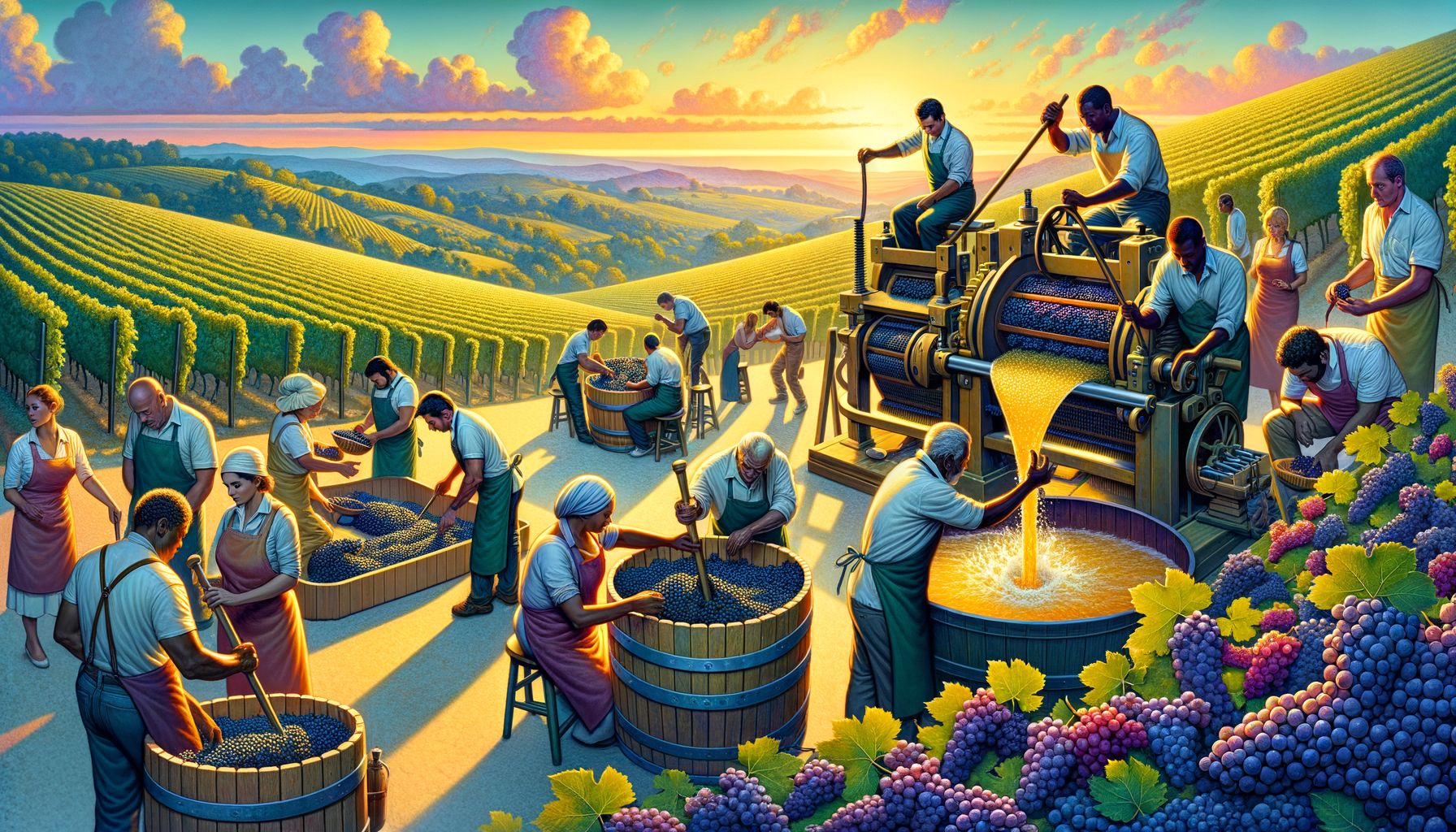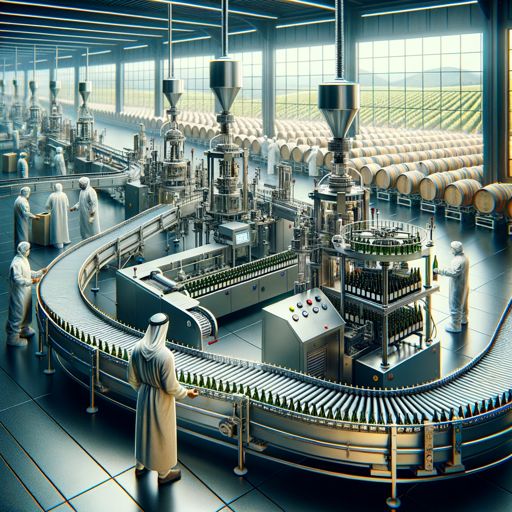The Art and Science of Winemaking at Keuka Overlook Wine Cellars
Nestled on the slopes above the picturesque Keuka Lake in New York’s Finger Lakes region, Keuka Overlook Wine Cellars stands as a testament to the fusion of tradition, innovation, and terroir-driven winemaking. With a deep-rooted philosophy focused on expressing the unique character of its land, Keuka Overlook has earned acclaim for crafting wines that reflect both place and passion. This comprehensive exploration delves into every facet of their winemaking journey—from vineyard management to the final bottling—unveiling the meticulous care and expertise behind each bottle.
History and Philosophy of Keuka Overlook Wine Cellars
Founded in 1997 by winemakers John and Laura McGregor, Keuka Overlook Wine Cellars emerged from a vision to create world-class wines that capture the essence of the Finger Lakes. Drawing inspiration from European wine traditions while embracing modern enological advances, the McGregors set out to showcase the potential of cool-climate viticulture.
The winery’s guiding philosophy centers on minimal intervention, allowing the vineyard’s natural attributes to shine through. “Our goal is to let the land speak,” John McGregor often says. This ethos manifests in sustainable farming practices, hand-crafted small batches, and a relentless pursuit of quality over quantity. By prioritizing soil health, biodiversity, and responsible stewardship, Keuka Overlook ensures that each vintage is a genuine reflection of its origin.
Their commitment has not gone unnoticed: since 2005, Keuka Overlook has received more than 30 gold medals at national competitions such as the San Francisco Chronicle Wine Competition and New York Wine Classic. These accolades underscore their status as pioneers in American cool-climate winemaking.
Vineyard Location and Terroir Influence
The Finger Lakes region is renowned for its glacially carved landscapes and microclimates ideal for viticulture. Keuka Overlook Wine Cellars is perched on eastern-facing slopes above Keuka Lake—a site chosen for its exceptional sun exposure, well-drained soils, and moderating lake effects.
Terroir Characteristics
- Soil Composition: The vineyard’s soils are predominantly gravelly loam over shale bedrock. This composition ensures excellent drainage while imparting subtle mineral notes to the wines.
- Elevation: Vines are planted between 900–1,100 feet above sea level, reducing frost risk and extending hang time for grapes.
- Microclimate: Proximity to Keuka Lake moderates temperatures year-round, buffering vines against harsh winter lows and late spring frosts. This unique climate fosters slow ripening—critical for developing complex flavors while preserving acidity.
These environmental factors contribute to wines with vibrant aromatics, crisp acidity, and distinct minerality—hallmarks of Finger Lakes terroir. As viticulturist Laura McGregor notes: “Every bottle tells a story of our land—the lake breezes, stony soils, even the changing seasons.”
Grape Varietals Grown at Keuka Overlook
Diversity is key at Keuka Overlook Wine Cellars, where both classic European varieties and innovative hybrids thrive. Their varietal selection reflects decades of experimentation with what best suits their microclimate.
Primary Grape Varietals
| Varietal |
Origin |
Style Produced |
Notable Characteristics |
| Riesling |
Germany |
Dry & Off-Dry Whites |
Citrus blossom, green apple, slate |
| Chardonnay |
Burgundy |
Unoaked & Oaked Whites |
Apple, pear, subtle vanilla (oaked) |
| Cabernet Franc |
Loire Valley |
Red & Rosé |
Raspberry, bell pepper, spice |
| Pinot Noir |
Burgundy |
Light-Bodied Red |
Cherry, earthiness |
| Lemberger (Blaufränkisch) |
Austria/Germany |
Medium-Bodied Red |
Blackberry, black pepper |
| Vignoles |
Hybrid |
Late Harvest/Dessert Wines |
Pineapple, honeyed citrus |
In addition to these flagship grapes, smaller plots are dedicated to Gewürztraminer (noted for its floral aromatics), Grüner Veltliner (crisp whites), and hybrid varieties like Traminette—chosen for cold-hardiness without sacrificing flavor complexity.
This varietal palette allows Keuka Overlook to craft a broad portfolio: from bone-dry Rieslings with electric acidity to luscious late-harvest Vignoles brimming with tropical fruit notes.
Harvesting Techniques and Timing
Harvest at Keuka Overlook Wine Cellars is an orchestrated process where timing is everything. The team relies on both technological tools and traditional wisdom to determine optimal picking windows.
Precision in Picking
Harvest typically begins in mid-September with early-ripening whites like Chardonnay or Pinot Noir (for rosé), extending into late October for reds or late-harvest styles. Key factors influencing harvest decisions include:
- Brix Levels: Grapes are sampled daily as they near maturity; target sugar levels vary by varietal but generally range from 20–24° Brix.
- Acidity: Maintaining vibrant acidity is crucial for balance; titratable acidity readings guide picking schedules.
- Flavor Development: Tasting berries from different vineyard blocks helps assess phenolic ripeness—skin tannins must be ripe but not bitter.
- Weather Forecasts: Given New York’s unpredictable autumns, rapid mobilization is essential when rain or frost threatens crop quality.
Hand-harvesting remains standard practice for premium lots—preserving grape integrity and enabling careful sorting in the field. For larger production runs or less delicate varieties, mechanical harvesters may supplement manual labor but under strict supervision.
Crushing, Pressing, and Juice Extraction
Once harvested, grapes are swiftly transported to Keuka Overlook’s gravity-flow winery—a design choice that minimizes handling stress on fruit.
Gentle Processing Methods
- Sorting: Bunches undergo meticulous sorting by hand or via vibrating tables to remove underripe or damaged berries.
- Crushing/Destemming: Whites are typically destemmed before gentle pressing; reds may be partially crushed or left whole-cluster depending on desired style.
- Pressing: Pneumatic bladder presses extract juice with minimal oxidation or harsh phenolic pickup—essential for aromatic whites like Riesling.
- Free Run vs Press Juice: The initial “free run” juice is separated from subsequent press fractions; free run is reserved for top-tier wines due to its purity.
For reds such as Cabernet Franc or Lemberger destined for structured wines, some skin contact prior to fermentation enhances color extraction while preserving freshness—a hallmark of cool-climate reds.
Fermentation Methods and Yeast Selection
Fermentation at Keuka Overlook Wine Cellars blends scientific rigor with creative artistry. Each lot receives tailored treatment based on grape variety and intended wine style.
Controlled Fermentation Practices
- Temperature Management: Whites ferment cool (50–60°F) in stainless steel tanks to retain delicate aromatics; reds ferment warmer (70–85°F) in open-top vessels for optimal color/tannin extraction.
- Yeast Choices: Both commercial strains (e.g., Lalvin EC1118 for clean fermentations) and wild/native yeasts are employed depending on desired complexity:
- Riesling: Often inoculated with neutral yeast strains to highlight varietal purity
- Chardonnay: Some lots undergo wild fermentation for added texture
- Reds: Native ferments encouraged in select blocks for nuanced aromatics
- Cap Management: For reds undergoing skin fermentation (e.g., Pinot Noir), punch-downs or pump-overs ensure even extraction without excessive bitterness.
Fermentations are closely monitored via daily lab analyses—tracking sugar depletion (using hydrometers/refractometers), temperature stability, volatile acidity levels—and sensory evaluations by cellar staff.
Aging Processes: Barrels, Tanks, and Timeframes
Aging imparts depth and complexity—a critical stage where raw wine transforms into a polished product worthy of the Keuka Overlook label.
Vessel Selection & Aging Regimens
A combination of vessels supports stylistic diversity:
- Stainless Steel Tanks: Used primarily for aromatic whites like Riesling or Grüner Veltliner; preserves freshness without oak influence.
- French Oak Barrels: Employed for Chardonnay (6–12 months sur lie aging) or select reds; new barrels impart subtle vanilla/toast notes while older barrels contribute texture without overwhelming fruit character.
- American Oak Barrels: Occasionally used for Lemberger or Cabernet Franc when spicier oak tones are desired.
- Concrete Eggs/Foudres: Experimental lots may see time in concrete vessels—promoting microoxygenation without wood flavors.
Aging durations vary by wine style:
| Wine Style |
Vessel Type |
Typical Aging Time |
| Dry Riesling |
Stainless Steel |
4–8 months |
| Oaked Chardonnay |
French Oak Barrel |
8–12 months |
| Pinot Noir |
Neutral Oak Barrel |
10–14 months |
| Cabernet Franc |
Mixed Oak Barrels |
12–18 months |
| Late Harvest Vignoles |
Stainless Steel |
6–10 months |
Regular racking clarifies wine naturally while integrating flavors from lees contact (in whites) or softening tannins (in reds). Blending trials begin only after optimal maturation benchmarks are met during barrel tastings led by head winemaker Laura McGregor.
Blending Strategies for Signature Wines
Blending at Keuka Overlook transcends mere technical adjustment—it’s an act of creative expression that defines house style year after year.
Artful Assemblage Techniques
The blending process unfolds over several weeks post-aging:
- Component Evaluation: Each lot is tasted blind by a panel including winemakers and cellar staff; detailed notes assess aroma intensity, mouthfeel balance, acid structure.
- Trial Blends: Small-scale blends test various proportions—e.g., combining bright young Riesling with barrel-aged reserve lots enhances complexity without sacrificing vibrancy.
- Final Assembly: Once consensus is reached on blend composition (often after dozens of iterations), components are married together in tank prior to bottling.
- Micro-Oxygenation/Oak Adjustment: If necessary based on sensory feedback (e.g., if tannins need further integration), brief additional aging may follow blending before bottling commences.
Signature cuvées such as “Overlook White” (a blend dominated by Riesling with touches of Gewürztraminer) exemplify this approach: each vintage offers subtle differences shaped by weather patterns yet remains true to house character—lively fruit core balanced by brisk Finger Lakes acidity.
Quality Control and Tasting Procedures
Maintaining unwavering quality across vintages demands vigilance at every stage—from grape reception through finished bottle release.
Multi-Layered Quality Assurance
Lab Testing
- Every lot undergoes chemical analysis: pH/TA levels confirm acid balance; SO₂ checks ensure microbial stability; periodic testing screens for faults like Brettanomyces or excess volatile acidity.
Sensory Panels
- Regular blind tastings benchmark current releases against previous vintages—and competitors’ wines—to identify areas needing refinement.
Critical Control Points
- Strict sanitation protocols prevent contamination during processing/aging
- Cold stabilization ensures tartrate crystals do not form post-bottling
- Filtration decisions weigh clarity needs against potential flavor loss
Pre-Bottling Trials
Before bottling any wine destined for commercial release:
- Micro-bottlings simulate final product conditions
- Bottles stored under varying temperatures/light exposures monitor stability over time
- Only once shelf-life targets are met does full-scale packaging proceed
These layers guarantee every bottle bearing the Keuka Overlook name meets exacting standards—for both immediate enjoyment and cellaring potential up to a decade or more.
Bottling, Labeling, and Packaging Practices
The journey culminates in careful bottling—a process blending precision engineering with artisanal attention-to-detail at every step within Keuka Overlook’s state-of-the-art facility installed in 2017 at a cost exceeding $350K USD.
Modern Bottling Line Features
- Fully automated filling/corking system ensures minimal oxygen pickup (<0.5 mg/L dissolved O₂)
- Nitrogen sparging protects delicate aromatics during bottling runs
- In-line laser coding provides traceability back to specific tanks/lots
- Rigorous glass inspection eliminates flawed bottles pre-fill
Labels reflect both heritage and modernity: elegant typography showcases estate imagery alongside essential information—varietal composition (% breakdown), alcohol content (ABV), vintage year—all compliant with TTB regulations governing US wine labeling standards.
Packaging options have expanded recently:
* Lightweight eco-glass bottles reduce shipping emissions/costs by up to 15%
* Recyclable screwcaps now offered alongside traditional cork closures based on consumer preference per market research conducted in partnership with Cornell University’s AgriTech division
* Custom gift boxes feature sustainable materials sourced locally whenever possible
All finished goods rest briefly post-bottling (“bottle shock” period) before release—a final safeguard ensuring optimal integration upon arrival at your table whether purchased direct from their tasting room overlooking scenic Keuka Lake or via leading US retailers such as Total Wine & More or Wegmans Fine Wines department statewide since their distribution expansion began in 2020.
Through each phase—from vine planting atop ancient glacial hillsides through fastidious cellar work—the story of Keuka Overlook Wine Cellars unfolds as one defined by passion-fueled craftsmanship rooted deeply in sense-of-place authenticity. Their unwavering dedication yields not just award-winning bottles but an enduring invitation: experience what makes Finger Lakes wine truly exceptional—with every sip reflecting land lovingly tended across generations along these storied shores.
| 

![]()